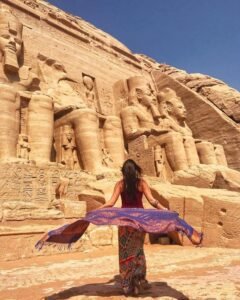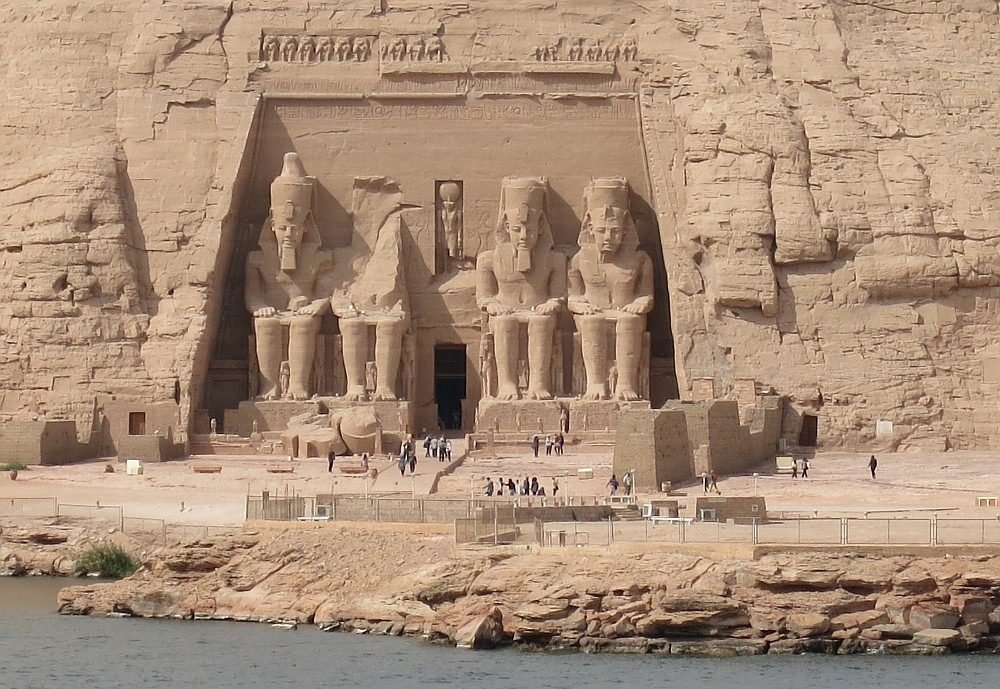Facts About Abu Simbel in Aswan
Fascinating Facts About Abu Simbel: A Marvel of Ancient Egypt
Abu Simbel is one of Egypt’s most captivating and awe-inspiring ancient sites. Located near the southern border with Sudan, this monumental 
complex stands as a testament to the grandeur and genius of ancient Egyptian civilization. Whether you’re a history buff, a casual traveler,
or someone planning their next adventure, this blog post will provide you with everything you need to know about Abu Simbel.
Here are the most intriguing facts and helpful insights into this extraordinary landmark.
Introduction to Abu Simbel
Abu Simbel consists of two massive rock temples originally carved out of a mountainside during the reign of Pharaoh Ramses II in the 13th century BC. These temples were created to celebrate Ramses’
victory at the Battle of Kadesh and to demonstrate the greatness of Egypt to its southern neighbors.
Overview
- Location: Approximately 280 km southwest of Aswan, close to the border with Sudan.
- Construction Period: Built during the reign of Pharaoh Ramses II, around 1264 BC.
- Purpose: To impress Egypt’s neighbors in the south and to reinforce the Egyptian religion in the region.
Historical Significance
Ramses II
Ramses II, one of Egypt’s most powerful and celebrated pharaohs, reigned for 67 years. He is known for his extensive building programs and for the promotion of Egyptian architecture,
which cemented his legacy and the grandeur of ancient Egypt.
Symbol of Power
Abu Simbel’s creation was not just a display of Ramses II’s power but also a demonstration of Egypt’s engineering prowess. The complex was strategically positioned to showcase the might and
sophistication of Egyptian civilization to anyone approaching from the south.
Architectural Marvel
The Great Temple
The larger of the two temples honors Ramses II himself and the gods Amun, Ra-Horakhty, and Ptah.
Facade: Four colossal statues of Ramses II, each standing about 20 meters (66 feet) tall, dominate the facade.
Interior: The temple extends 63 meters (207 feet) into the mountain. Inside, intricate carvings and murals depict various divine and martial scenes.
The Small Temple
The smaller temple is dedicated to the goddess Hathor and Ramses’ favorite queen, Nefertari.
- Facade: The facade displays six statues—four of Ramses and two of Nefertari, each standing about 10 meters (33 feet) tall.
- Interior: The elegant interiors are adorned with scenes showing the queen participating in divine rituals and the depiction of the daily life of the gods and goddesses.
The Solar Alignment Phenomenon
One of the most remarkable features of Abu Simbel is its solar alignment. Twice a year, on around February 22 and October 22, the sun’s rays penetrate the temple’s sanctuary
to illuminate the faces of the statues of Ramses II and the gods. This event was designed to commemorate the pharaoh’s birthday and coronation day, respectively.
The Relocation of Abu Simbel
The Threat of Flooding
In the 1960s, the construction of the Aswan High Dam posed a significant threat to the temples due to the creation of Lake Nasser. The international community came together to save these invaluable historical sites.
The Rescue Mission
From 1964 to 1968, engineers meticulously cut the temples into large blocks and reassembled them on higher ground, about 200 meters away and 65 meters higher than their original location. This complex project, which cost approximately $40 million, was financed by a coalition of 50 countries under the coordination of UNESCO
Visiting Abu Simbel
Getting There
By:
- Air: The fastest way to get to Abu Simbel is by taking a short flight from Aswan.
- Bus: Daily bus tours operate from Aswan, often departing early in the morning.
- Cruise: Some Nile cruises include Abu Simbel in their itineraries, offering a unique way to approach the site.
Best Time to Visit
The best times to visit Abu Simbel are in the cooler months between October and April. The solar alignment events in February and October are particularly significant times to schedule a visit.
Entrance Fees and Opening Hours
- Entrance Fees: Approximately $12 for adults, with discounts available for students and children.
- Opening Hours: Generally open from 5 AM to 6 PM, but it’s advisable to check the exact times ahead of your visit.
Practical Tips
- Stay Hydrated: The area can be extremely hot, so carry water to stay hydrated.
- Wear Comfortable Shoes: Expect to walk a lot, so comfortable footwear is essential.
- Respect the Site: As with all historical sites, respect the monuments and follow the guidelines provided by the authorities.
Modern-Day Relevance
Abu Simbel continues to capture the imaginations of millions around the world. Its historical, cultural, and engineering significance makes it an essential study for historians, architects, and engineers.
The temples are also a testament to international cooperation in cultural preservation.
Cultural Impact
The story of Abu Simbel has permeated popular culture, appearing in documentaries, movies, and literature. It serves as an enduring symbol of ancient Egypt’s legacy and humanity’s effort to preserve its past.
Educational Importance
In addition to its cultural impact, Abu Simbel serves as an educational monument. Schools and universities often study its history and the extraordinary relocation project as part of curriculums on engineering, history, and archaeology.
Conclusion
Abu Simbel is an extraordinary blend of ancient art, engineering, and history. Its grandeur, both in its original construction and its relocation, stands as a symbol of human ingenuity and perseverance.
Whether you’re fascinated by ancient civilizations or simply looking to experience an awe-inspiring site, Abu Simbel offers an unforgettable glimpse into Egypt’s glorious past. With its captivating history,
remarkable architecture, and ongoing relevance, Abu Simbel truly is a marvel of ancient Egypt that continues to enchant and educate visitors from around the world.








